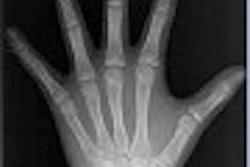Levels of the hormone dehydroepiandrosterone (DHEA) have a tendency to decline in women as they grow older and lose bone mass, according to ob/gyn specialists from Turkey. As a result, DHEA replacement therapy may be useful for preventing and treating osteoporosis in postmenopausal women, they suggested.
"Reduction in the (DHEA) serum concentration is associated with a variety of pathophysiological conditions, including obesity ... and osteoporosis," wrote lead author Dr. Mehmet Osmanağaoğlu and colleagues. "Administration of DHEA to postmenopausal women has been shown to induce beneficial effects.... However, clinical studies of the administration of DHEA are limited" (Journal of Women's Health, November 2004, Vol. 13:9 pp. 993-999).
Osmanağaoğlu is from the department of obstetrics and gynecology at the Medicine School of Karadeniz Technical University in Trabzon. The study co-authors are from the same institute, as well as the Istanbul Acibadem Hospital in Istanbul.
For this study, 227 women over the age of 40 were enrolled. Of these, 108 were postmenopausal and not on hormone replacement therapy (HRT), and 58 were postmenopausal and on HRT. Sixty-one premenopausal, normally menstruating women made up the control group.
Bone mineral density (BMD) measurements were taken at the lumbar spine (L1-L4) using a QDR 2000 DEXA scanner (Hologic, Bedford, MA). Osteopenia was defined as a BMD between 1 and 2.5 standard deviations below the T score. A standard deviation of 2.5 or more below the T score was considered osteoporosis. Dehydroepiandrosterone sulfate (DHEAS) levels were measured with an automated chemiluminescent enzyme immunoassay. The investigators also recorded body mass indexes and lipid levels.
The results showed a positive correlation between DHEAS levels and BMD in all three groups of women. The rate of postmenopausal women with osteoporosis was 12%, and the rate of osteopenia was 34%. The authors reported a significantly higher osteopenia rate in postmenopausal women not on HRT compared to those who were on hormone therapy. Finally, the group found a significant association between DHEAS levels, aging, and spinal BMD.
"Our study confirms earlier reports that DHEAS levels decrease with age ... regardless of estrogen treatment," the authors wrote. "This finding suggests that DHEAS levels decline progressively with increasing age, and that DHEAS levels are significantly associated with bone mass."
They hypothesized that DHEA replacement therapy may be complementary to estrogen replacement for preventing and treating osteoporosis in postmenopausal women. However, they stated that long-term, placebo-controlled studies were still required to fully assess the benefits of DHEA in these patients.
By Shalmali Pal
AuntMinnie.com staff writer
January 4, 2005
Related Reading
Studies examine osteoporosis management in women with fractures, December 27, 2004
Rads urged to standardize reporting of vertebral fractures, November 23, 2004
Copyright © 2005 AuntMinnie.com



















